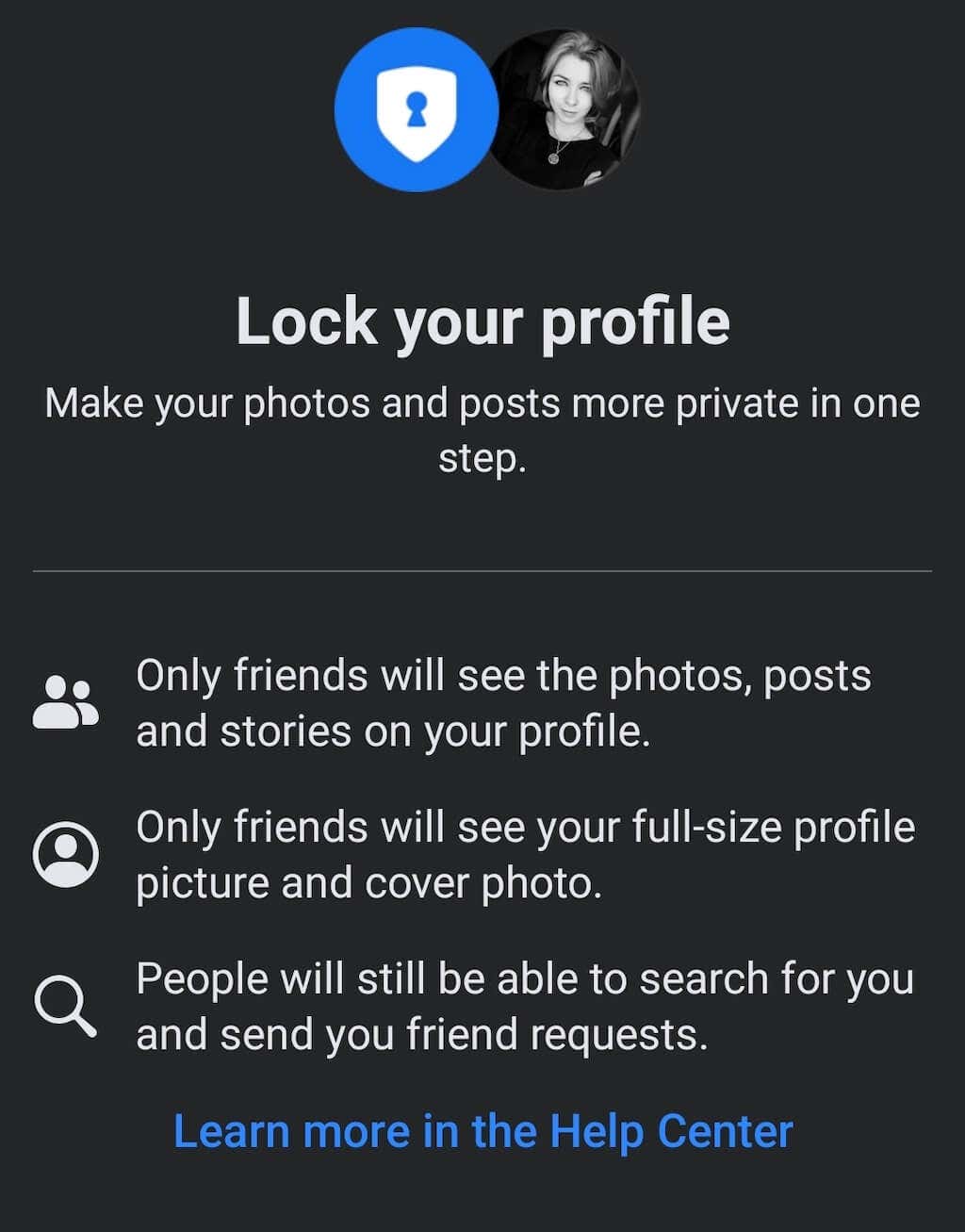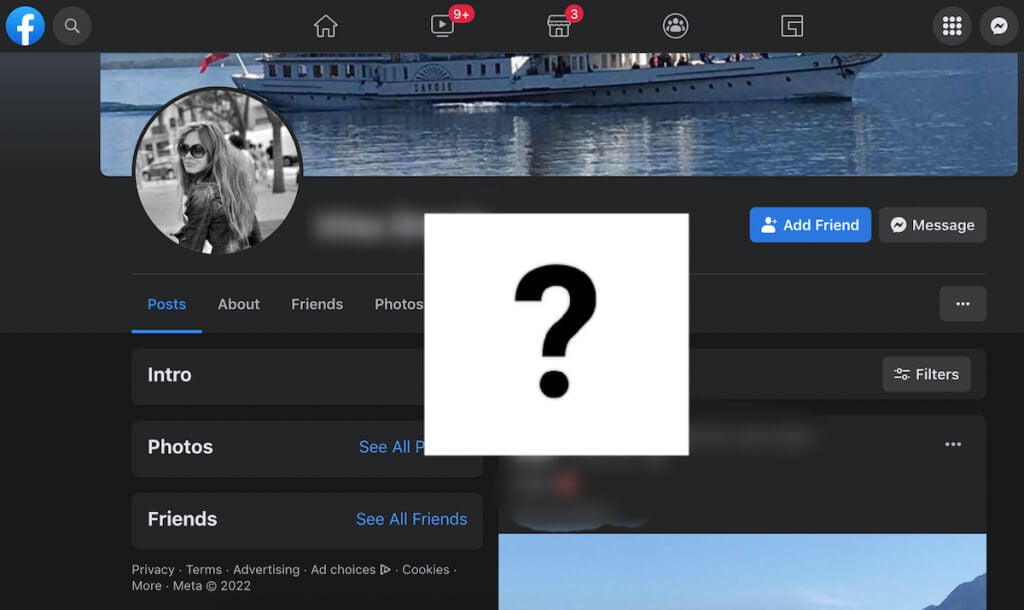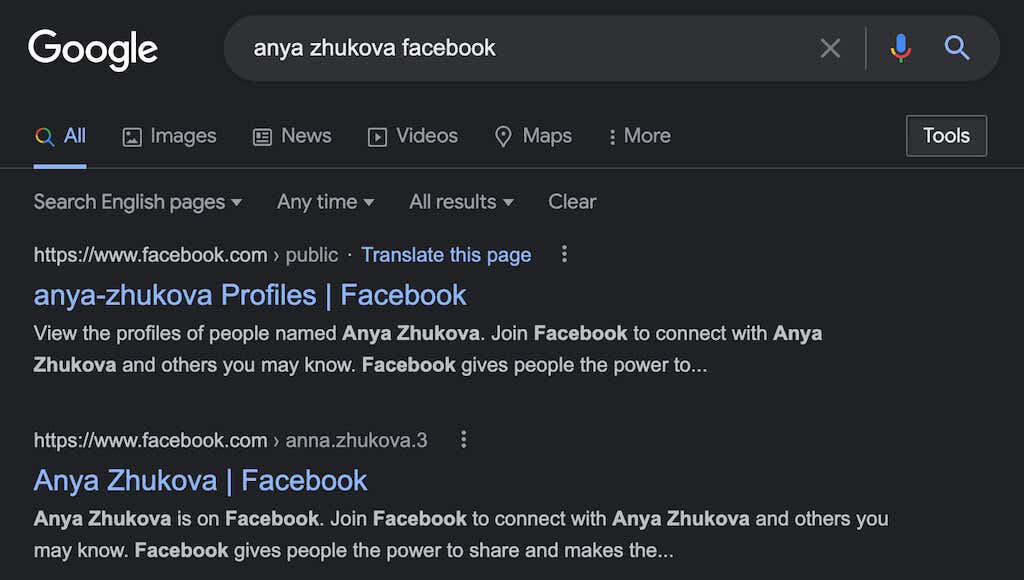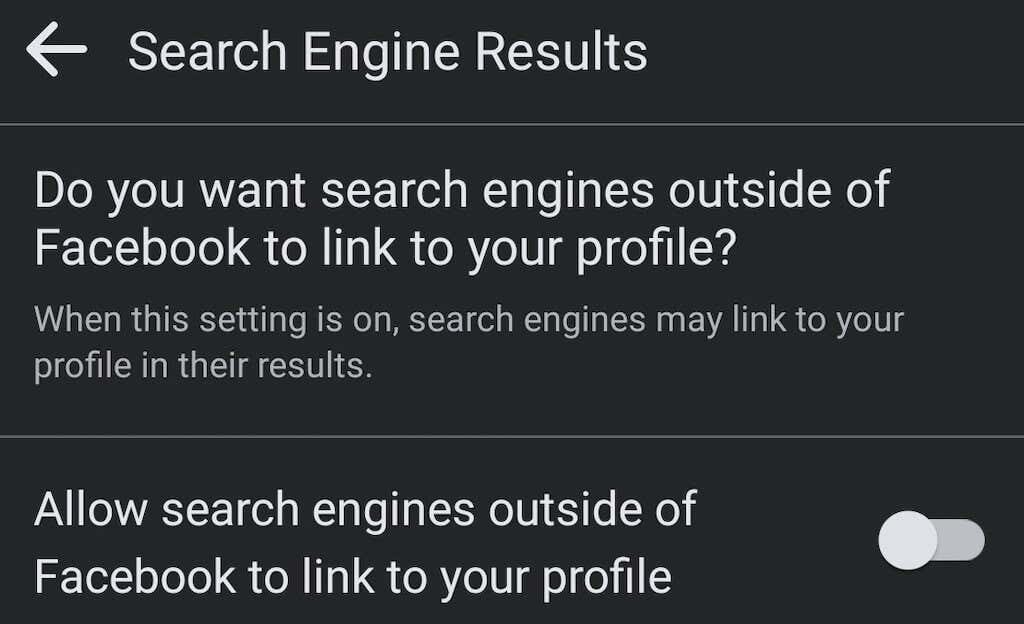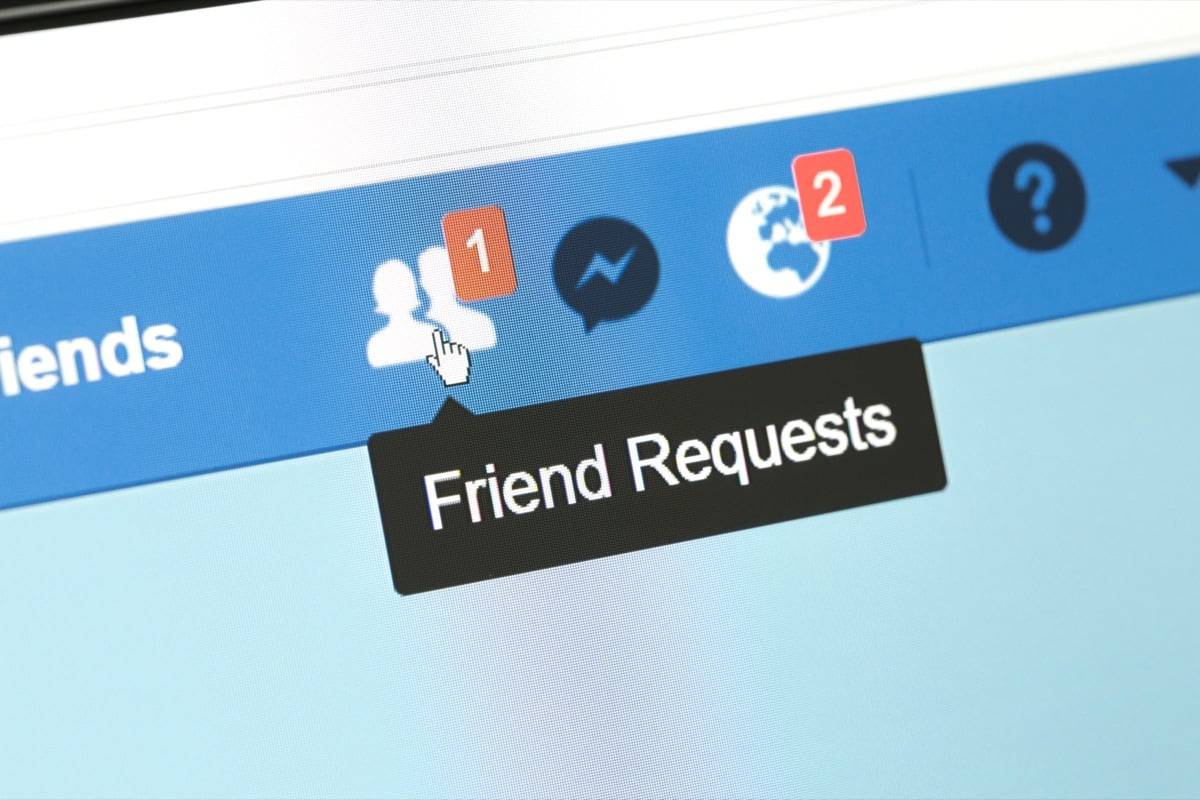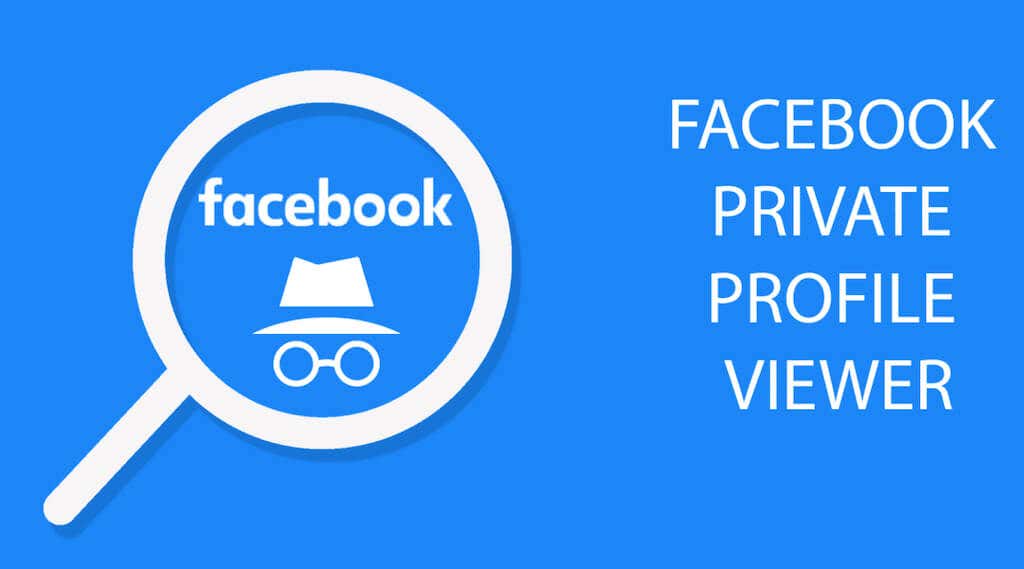By default, Facebook makes most of its users’ information public. People who are concerned about their online privacy choose to make their profiles private to limit what others can see on their Facebook page.
Unfortunately, even if you set out to create an anonymous Facebook account, there are still ways others can use to view your user information. In this article, you’ll learn about the tactics and loopholes that other Facebook users can exploit to get access to someone’s private Facebook account, as well as what to do to protect your personal information.
How Private Facebook Profile Works
A private Facebook profile is one you cannot access without being friends with the account’s owner. If you’re not on their friends’ list, you won’t be able to see any user information, their posts, their Facebook friends, and you might not even see their Facebook profile picture.
If someone’s profile on Facebook is private, that means they took the time to go through their privacy settings and switch off any options that exposed their personal details to strangers. These settings include making your Facebook friends list private, preventing search engines from displaying your Facebook account in search results, making your Facebook posts private, making your profile photo private, and more.
While this doesn’t make you completely anonymous, it certainly helps to limit the circle of people who can access and use your personal information.
Things that you can always see on any Facebook profile (private or public) include their username, a small version of their profile picture (if they have one), and any mutual friends that you have on Facebook.
How to View Private Facebook Profiles
Sadly, people with malicious intentions can still access your private information even when you’ve set your Facebook account to private. Facebook’s notorious for its security and privacy scandals, and not without a reason.
Even though the company claims to be constantly working on making sure your private data remains private, there are several workarounds that allow other people to see into your locked Facebook profile. Knowing about them can help you understand how to protect yourself from hackers, data brokers that bulk-collect user information, and unwanted attention from other Facebook users.
Here are the most popular methods to view a Facebook private profile.
Method One: Google Indexing
Some people don’t have to see into your private profile to access your hidden photos or personal data. If you’re not careful with your privacy settings, they can find most of your private information on Google. The intruder can take advantage of a process called Google indexing – analyzing content on a website (Facebook) to include it in search algorithms. Basically, Google finds any information about you on Facebook that’s set to public and displays it online.
All you have to do to find information about a Facebook user using Google is to put their name in Google search and include Facebook in your inquiry to narrow down the search. Google will then give you all the information it finds about the person on Facebook that’s been set to public.
How to beat it: You can easily restrict the information that Facebook’s allowed to share with Google by tweaking your Facebook privacy settings. To do that, open the Facebook app on your Android or iPhone, select Settings & privacy > Settings.
Scroll down until you see Audience and visibility and select How people find and contact you. Under Do you want search engines outside of Facebook to link to your profile select No? You can also edit these settings in the browser version of Facebook.
This change takes time to take effect, and search engines won’t stop linking to your profile immediately. However, if you want to eliminate the risk of strangers finding your user profile information on Google, it’s best to disable this setting as soon as possible.
Method Two: Send a Friend Request
One of the easiest things to do to see into someone’s private profile on Facebook is sending the user a friend request. By default, if you are friends with someone, you can view their private Facebook account.
After you send the request, all you can do is wait for them to accept it. When that happens, you can view the information from their About section, their Stories, status updates, new and old posts, tagged photos and more.
However, if the user doesn’t accept your friend request, there’s not much else you can do. You can’t view their Facebook profile without being friends, and there’s no way to tell how long you’ll wait until the account owner responds to your friend’s request. There’s even a chance they won’t respond to it at all, as Facebook allows users to ignore friend requests.
If they decline your friend request, and you suspect the reason being your identity, you can also try sending a friend request from a fake Facebook profile. In case you don’t want to reveal your real Facebook ID, you can create a fake Facebook profile and use that to become friends with your target. If this fails as well, you’ll have to use another workaround to view private Facebook photos and other information from your target’s private profile.
How to beat it: A simple strategy to avoid letting a stranger into your private Facebook space is to never accept random friend requests from people you don’t know. This becomes more difficult if you don’t monitor your Facebook friend’s list closely, and have many friends there.
The person targeting your account may use information found on other accounts linked to yours (like TikTok or Instagram account), to make you believe they’re someone you’ve met before, like a long-lost school friend or a colleague from a previous workplace.
Method Three: Social Engineering
When the first two methods fail, the third thing a user can try to get into a private account on Facebook is social engineering. Facebook privacy settings have a loophole that you can exploit – when a user activates private mode, they might choose not to make it completely private but restrict the access from people outside of their friends circle.
While doing so, they might choose to allow access to “friends of friends”. That means that if you and the targeted person have a mutual friend, you’ll be able to see the target’s Facebook profile, even if it’s set to private.
Having just one mutual friend is enough for this method to work. If you don’t have any, you can try sending a friend request to one of their friends. Another factor that can stop you is if the targeted user has their friends list hidden as well. In that case, you may try searching for their friends outside Facebook using other social media platforms, although that can take a while.
How to beat it: This one’s easy to beat. Step one: restrict your friends list on Facebook. To do that, open a web browser on your computer and launch Facebook. Then follow the path Settings & Privacy > Settings > Privacy > How people can find and contact you, then select the right option next to the Who can see your friends list option.
In the mobile app (iOS and Android), the path’s a little different: Settings & privacy > Settings > Audience and visibility > How people find and contact you > Who can see your friends list. For maximum privacy, choose the Only me option, and you’ll be the only person who can see your friends list.
Step two: make all of your social media accounts private. This includes Instagram, Snapchat, TikTok, Twitter, LinkedIn, and any other social media platforms that might contain your personal information.
Method Four: Use Third-party Apps
Unfortunately, even after you follow all the precautions and make your account as private as Facebook allows it, people may still access your personal information using a third-party tool.
Using spyware and Facebook profile viewer tools, people can access your hidden pictures, profile info, private posts, and more. Certain Spyware apps can even provide access to your Messenger chats.
However, in order for most of these apps to work, they have to be installed onto your device (smartphone or computer). That means that unless someone has direct access to your gadgets or tricks you into downloading and installing a malicious app, your private data should be safe. On top of that, most of these spying apps require paid subscriptions. That alone can stop some people if all they’re after are a few of your hidden Facebook pictures.
How to beat it: There’s no active way to stop this from happening. At the same time, you can strengthen the security of your accounts by using a password manager, and a malware scanner.
Is it (Again) Time to Leave Facebook for Good?
Facebook’s a security and privacy disaster, and an ultimate way to protect your data is to delete your Facebook account for good. If you’re not quite ready to kiss Facebook goodbye, you can try deactivating your account instead. Give it a few weeks or months, and see if you can live without Facebook before cutting the ties completely.

